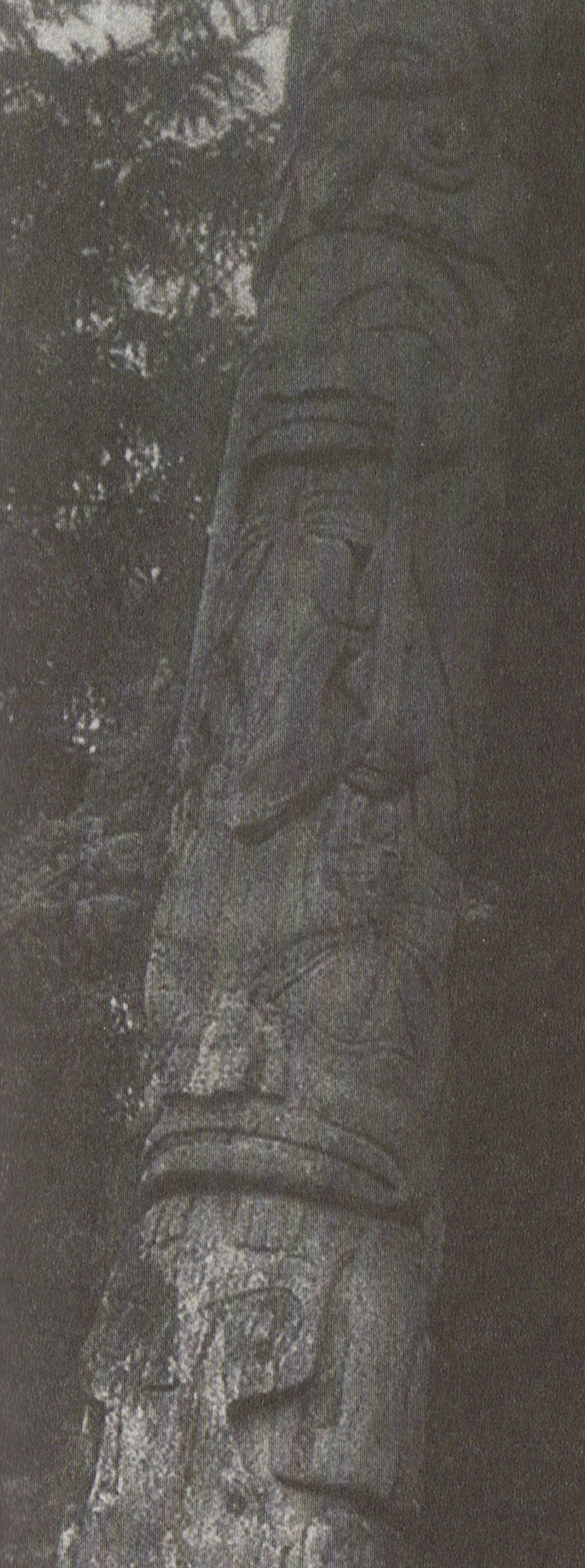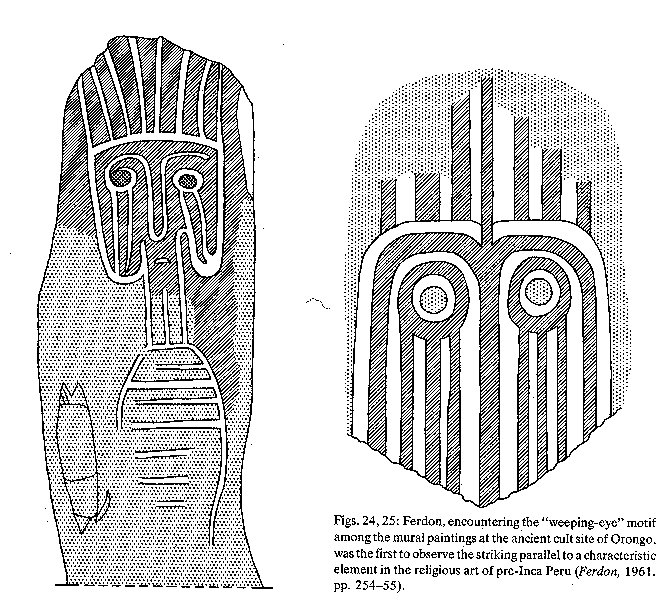|
TRANSLATIONS
Next page in the glyph dictionary:
The gods in Polynesia were bird-like beings, creatures of the sky. In Haida Gwaii the gods were creatures of the sea: "Like the blankets who can speak to one another, the long eyes of the old god on the seafloor startle a few visitors in museums around the world. Haida sculpture, by convention, make the heads impossibly large for the bodies of their figures, and the eyes impossibly large for the heads, but these exaggerated eyes are of many different kinds. The eyes of amphibians and fish, for instance, are usually represented as circular, the eyes of sharks as vertically elliptical, and the eyes of mammals and birds as ovoid. But throughout the Northwest Coast, elongated eyes are a distinguishing mark of the god of wealth, who lives in a house on the floor of the sea, surrounded by seals. The usual Haida name for this spirit-being is Tangghwan Llaana, or Sea Dweller. His Tlingit name is Gunaakadeit (a word whose etymology still stumps me). In Tsimshian he is Nagunaks, which simply means 'located in the water'. A two-dimensional, frontal view of his face appears on the sides of countless Haida, Tlingit and Tsimshian storage chests. In these representations, the eyes are generally stretched sideways and equipped with double pupils. Each eye becomes a face within a face. In three-dimensional representations, the eyes more often protrude. The Nuuchahnulth trader and hunter Saayaacchapis put it this way to Edward Sapir in 1913: A'iihh'atma qasii hhawwihlmis'i ... Cchushaama yaaqwihl'itq cchusha: 'Wealth has big eyes ... He is wary of those he suspects.' Common though he is on Haida storage boxes, this god of wealth is rare on Haida poles. Nevertheless, he appeared in a prominent form on three of the two dozen housepoles standing in Skaay's village, Ttanu, in the latter half of the nineteenth century. Here his eyes are elongated vertically, in keeping with the form of the pole itself. They reach across his cheeks and well beyond his chin. In the end of each such elongated eye, where the pupil ought to be, there is not just a face but a complete small creature, like a not-quite-human child.
... People unfamiliar with Haida tradition have often misunderstood this figure as 'the weeping woman of Ttanu', but early Haida interpretations are unanimous in regarding it as the image of a submarine old man." (Sharp as a Knife) The 'Weeping God' was clearly not only a person in pre-Inca Peru and on Easter Island but also on the Northwest Coast.
If he is not weeping on the Northwest Coast, then he probably is not weeping on Easter Island or in Peru either. The not-quite-human 'tear' presumably is the 'tadpole' of next generation. If space had allowed, his eyes maybe would have been like those on the sides of the boxes: '... A two-dimensional, frontal view of his face appears on the sides of countless Haida, Tlingit and Tsimshian storage chests. In these representations, the eyes are generally stretched sideways and equipped with double pupils. Each eye becomes a face within a face. In three-dimensional representations, the eyes more often protrude ...' The storage chests contain riches, which connects to ragi. Maybe the meaning of ragi primarily is 'riches', rather than sky. Twin pupils side by side we have not seen before, yet the right version from Orongo above has double pupils, one inside the other. The elongated eye with a pupil in form of a 'not-quite-human child' makes one think about the double pupil words in the English language: pupil1 ... orphan who is minor and hence a ward ... one under instruction ... L. pūpillus, -illa orphan, ward ... of pūpus boy, pūpa girl ... pupil2 ... circular opening in the iris of the eye ... L. pūpilla ... secondary dim. of pūpa, girl, doll, pupil of the eye ... The application of the L. words to the pupil of the eye is based on, or parallel to, that of Gr. kórē maiden, girl, doll, pupil (the allusion being to the tiny images of persons and things that may be seen therein ... (English Etymology) The sun in Eastern Polynesia delivers warmth, light and progeny, which as if by magic emerges through the eye of the sun. Likewise rain must come through some opening in the eye - of the weeping god. The pupil is dark and the surrounding iris lighter in colour. In the dark new life is generated - 9, 19 and 29. |

